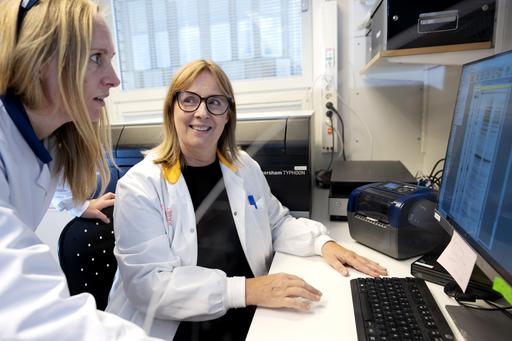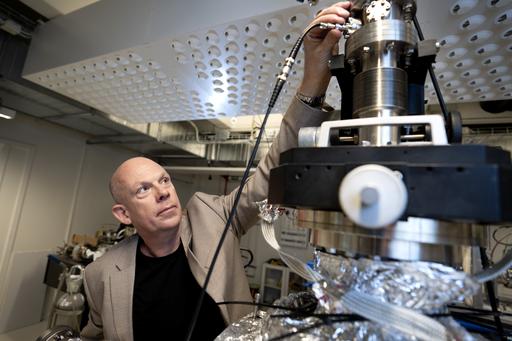- Home
- News and events
- Find news
- Two Excellent Research Projects Receive 66 Million SEK from KAW
Two Excellent Research Projects Receive 66 Million SEK from KAW
Basic research on the cell’s powerhouses and fundamental research on electron charge transfer are the two excellent projects at the University of Gothenburg that have been granted funding from the Knut and Alice Wallenberg Foundation.
In total, 30 Swedish research projects in medicine, natural sciences, and technology will share a total of 835 million SEK in grants. All the projects have undergone a comprehensive international evaluation process, and have been deemed to be of such a high scientific standard that they have the potential to lead to future scientific breakthroughs.
“The foundation's evaluation process focuses on identifying projects at the forefront of international research that can contribute new knowledge,” says Peter Wallenberg Jr., Chairman of the Knut and Alice Wallenberg Foundation, in a press release from the foundation.
Two of the research projects are based at the University of Gothenburg. One of them is the project Dynamic Regulation of the Mitochondrial Gene Expression Network (MiGeNet), which has been awarded 32 million SEK. The principal investigator is Maria Falkenberg, Professor of Biomedical Laboratory Science. The other project, Attosecond Pulse Induced Quantum Electronic Processes, is led by Raimund Feifel, Professor of Physics, and it will receive 34 million SEK.
Searching for answers to a mystery of the cell’s powerhouse

Mitochondrial diseases, caused by defects in the cell’s powerhouse, are rare but often very serious. Mitochondrial diseases mainly cause symptoms in organs where very few or no new cells are formed. This includes systems like the nervous system and muscles. In the nervous system, cells are created early in life, and then stop dividing, staying the same throughout a person’s lifetime.
In contrast, organs where cells are continuously regenerated, such as the immune and blood systems, are less frequently affected by mitochondrial diseases.
“We believe that significant changes occur in the mitochondrial genetic system when they shift from constant renewal to long-term energy supply. If we find the answer, we think we can explain why mitochondrial diseases develop in cells that no longer renew,” says Maria Falkenberg, professor of biomedical laboratory science at the University of Gothenburg.
Her group will work together with three other research groups at the Sahlgrenska Academy, University of Gothenburg, and everyone is looking forward to collaborating as a team on the project.
“Our four nearby laboratories have complementary expertise in structural and molecular biology, as well as bioinformatics. It’s going to be exciting to combine our strengths in a new way. Together, we have a great opportunity to deepen our understanding of why mitochondrial diseases mainly affect certain tissues, while also contributing new insights to the field,” says Maria Falkenberg.
Detailed studies of collective electron movements

An atom or molecule exposed to radiation, such as sunlight, with a sufficiently short wavelength can emit electrons. This process was explained by Albert Einstein in 1905 through his photoelectric law, for which he was awarded the Nobel Prize in Physics.
Using advanced instruments that emit well-tuned laser pulses within attoseconds (10-18 seconds), researchers can now track when electrons leave a quantum system, leading to a charge transfer that they want to follow in time. The method was developed by Anne L'Huillier at the Lund Laser Centre, among others, and was awarded the Nobel Prize in Physics in 2023.
“Our research aims to study these collective electron movements in detail in different molecules. This is a long-standing goal in the field of attosecond chemistry,” says Raimund Feifel, Professor of Physics at the University of Gothenburg.
Feifel's team will use attosecond pulses to create holes in the charge distribution of molecules in a controlled way. For example, an electron can be removed from a specific atom in the molecule. By combining the world-leading knowledge in correlation methods found in Gothenburg with unique expertise in attosecond technology at Lund and Umeå Universities, the researchers will be able to experimentally map, and eventually control, quantum electronic processes in real time. Such processes occur in a variety of physical contexts and play a key role in chemical reactions. The theory will be developed in parallel with the experiments at Stockholm and Uppsala Universities.
“The grant from KAW means that we can build a new experimental station in our laser lab, Attohallen, at the University of Gothenburg, the dream has become a reality, and it feels great,” says Raimund Feifel.
By: Elin Lindström, Ulrika Lundin and Olof Lönnehed